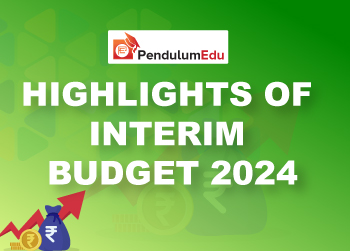Topic: Banking System
1. Public Sector Banks’ profit increased from Rs 31,816 crore in FY21 to Rs 66,539 crore in FY22.
- The combined profit of 12 Public Sector Banks stood at Rs 66,539 crore during the financial year 2021-22.
- After many years, all 12 state-owned banks reported net profit.
- SBI’s net profit was the highest at Rs 31,675 crore, 55% higher than the previous year.
- Bank of Baroda with a net profit of Rs 7,272 crore is in the second spot, and Canara Bank is in the third position.
- Private Banks registered a net profit of over Rs 91,000 crore, which is 29% more than the previous year.
- HDFC Bank (Rs 36,961 crore), ICICI Bank (Rs 23,339 crore), and Axis Bank (Rs 13,025 crore) are the top three most profitable banks in the private sector.
- The Bank of Maharashtra recorded less than 1 percent Non-Performing Assets (NPAs).
Topic: Appointments
2. Karnam Sekar has been appointed non-executive chairman of NARCL.
- Natarajan Sundar has been appointed as MD & CEO of the National Asset Reconstruction Company (NARCL).
- Sundar has been appointed with effect from 30 May 2022.
- He retired on April 30 as deputy managing director and chief credit officer of the State Bank of India.
- Malvika Sinha has joined NARCL Board as an independent director. Sinha retired as executive director of RBI.
- The NARCL board has five nominee directors from shareholder banks.
Topic: Banking/Financial Schemes
3. Government raised the premium rates for its two main social security schemes- PMJJBY and PMSBY.
- PMJJBY premium rates have been raised to 436 rupees per annum, up from 330 rupees per annum previously.
- The new premium for the PMSBY is 20 rupees per annum, up from the current 12 rupees per annum.
- The new premium rates have become effective from June 1, 2022.
- This is the first time the premium rates have been revised since the start of both schemes in 2015.
- According to the Union Finance Ministry, a target has been set to increase coverage from 6.4 crores to 15 crores under PMJJBY and from 22 crores to 37 crores under PMSBY during the next five years.
- PM Jeevan Jyoti Bima Yojana (PMJJBY):
- It was launched on 9 May 2015. The age limit for this scheme is 18-50 years.
- It provides life cover of Rs 2 lakhs in case of death of the insured, due to any reason.
- The scheme is offered by Life Insurance Corporation and all other life insurance companies.
- PM Suraksha Bima Yojana (PMSBY):
- It was launched on 9 May 2015 to provide affordable insurance for poor & underprivileged people of 18 to 70 years.
- Risk coverage under scheme is Rs 2 lakh for accidental death & full disability and Rs 1 lakh for partial disability.
- The scheme is offered by Public Sector General Insurance Companies or any other General Insurance Company.
Topic: Indian Economy/Financial Market
4. India’s GDP grew at 4.1% for the January-March quarter of FY22 as per National Statistical Office data.
- India’s GDP for the financial year 2021-2022 grew at 8.7%. This is slightly less than 8.9% projected in February.
- The GDP rate for the January-March quarter was lower than the 5.4% GDP rate recorded for the October-December quarter.
- The only sector that has shown contraction in the January-March quarter is manufacturing. It has shown contraction at -0.2%.
- Private final consumption expenditure increased by 1.8% year-on-year in Q4 of FY22.
- Gross fixed capital formation increased by 5.1%. Government final consumption expenditure grew at 4.8% in January-March.
- Gross Value Added grew at 8.1% for FY22. The GDP in nominal terms grew at 19.5%.
Topic: Miscellaneous
5. Government has approved extension of PMEGP scheme till FY26 (financial year 2025-26) with an outlay of Rs 13,554 crore.
- In the next five years, the scheme will create employment opportunities for about 40 lakh persons.
- PMEGP scheme will also help youth in setting up micro-enterprises in non-farm sectors.
- The definition of village industry and rural areas has also been changed for the Prime Minister's Employment Generation Programme.
- Areas under the Panchayati Raj Institutions will be treated as rural areas, while areas under municipal corporations will be treated as urban areas.
- Applicants from aspirational districts and transgender will be treated as special category applicants and they will get higher subsidies.
- Under this, the maximum project cost for manufacturing units has been increased to Rs 50 lakh, it was earlier Rs 25 lakh.
- For service sector units, it has been increased from Rs 10 lakh to Rs 20 lakh.
- Prime Minister's Employment Generation Programme:
- It is a credit-linked subsidy scheme launched in 2008.
- It is implemented by the Khadi and Village Industries Commission (KVIC) at the national level.
- It was launched by merging two schemes- Prime Minister's Rojgar Yojana (PMRY) and Rural Employment Generation Programme (REGP).
Topic: Indian Economy/Financial Market
6. India’s fiscal deficit for the financial year 2021-22 narrows down to 6.7% of GDP.
- The fiscal deficit in FY22 stood at 6.7% of GDP as against the revised budget estimate of 6.9%.
- In February, the Finance Ministry estimated a Fiscal deficit of Rs 15,91,089 crore or 6.9 percent of GDP.
- According to the latest data, the tax receipts were Rs 18.2 trillion as against the revised estimates (RE) of Rs 17.65 trillion.
- For FY 2022, the revenue receipts stood at ₹21.68 lakh crore or 104.3% of the revised estimate.
- Overall expenditure was estimated at Rs 37. 9 lakh crore or 100. 6% of the revised estimate.
- The government missed the target of receipts from divestment.
- The government has estimated a fiscal deficit of 6.4% for the current financial year.
- Fiscal deficit is the difference between the government’s total income and total expenditure. Government meets its fiscal deficit from market borrowings.
Topic: Miscellaneous
7. Union Cabinet has expanded the mandate of Government e-Marketplace (GeM).
- Union Cabinet has allowed procurement by cooperatives as buyers on GeM.
- The decision would help cooperatives in getting competitive prices through open and transparent process.
- Ministry of Cooperatives will decide on the validated list of cooperatives to be onboarded on GeM.
- Ministry of Commerce and Industry launched Government e-Marketplace on August 9, 2016.
- It was launched to create an open and transparent procurement platform for Government buyers.
Topic: Indian Economy/Financial Market
8. India’s goods exports increased 15.46% to $37.29 billion in May.
- Imports in May increased 56.14% to $60.62 billion. India’s trade deficit trebled to $23.3 billion in May.
- Increase in exports is mainly driven by petroleum products, electronic goods and readymade garments.
- Non-petroleum exports increased 8.13% to $29.18 billion.
- For April-May 2022-23 period, India’s goods export increased 22.26% to $77.08 billion and imports increased 42.35% to $120.81 billion.
- Trade deficit for April-May 2022-23 period doubled to $43.73 billion.
- Collection from Goods & Services Tax (GST) crossed over ₹ 1.40 lakh crore mark in May 2022.
- This collection is 16% lower than April collection of ₹1.68 lakh crore.
- This is only the fourth time that the monthly GST collection crossed ₹1.40 lakh crore mark since the launch of GST.
Topic: Infrastructure and Energy
9. Government plans to replace 58,000- million units (MU) thermal power with 30-gigawatts (GW) renewable energy (RE) by FY26.
- The plan will save 34.7 million tonnes (MT) of coal and reduce carbon emissions by 60.2 MT.
- As per the plan, 20% of the targeted thermal capacity will be replaced with RE power in FY24. This will be followed by 35% in FY25 and 45% in FY26.
- The thermal power generating station-wise targets have been fixed.
- However, the thermal generating station can substitute larger amounts of thermal power with RE power.
Topic: Reports and Indices
10. ISALPI has been launched by Indian Institute of Management-Ahmedabad (IIM-A) in collaboration with SFarmsIndia.
- IIMA-SFarmsIndia Agri Land Price Index (ISALPI) is a land price index to record data of the prices of agricultural land in India.
- It is India’s first-of-its-kind land price index. It will record ‘quality controlled’ data of prices of agricultural land across the country.
- Presently, ISALPI is based on land listing data from six states.
- These states are Andhra Pradesh, Karnataka, Maharashtra, Tamil Nadu, Telangana, and Uttar Pradesh.
Topic: Reports and Indices
11. Crypto investing app CoinSwitch has launched CRE8.
- CRE8 is a cryptocurrency rupee Index. It is a benchmark index to track the performance of the Indian rupee-based crypto market.
- It tracks the performance of eight crypto assets, which represent more than 85% of total market capitalization of cryptos traded in Indian rupee.
- The eight tokens that constitute the index are Bitcoin (BTC), Ethereum (ETH), Binance Coin (BNB), Ripple (XRP), Cardano (ADA), Solana (SOL), Polkadot (DOT) and Dogecoin (DOGE).
- CRE8 index will be reconstituted every quarter to stay up to date with the market.
 Previous
Previous 
 Latest
Latest 








Comments